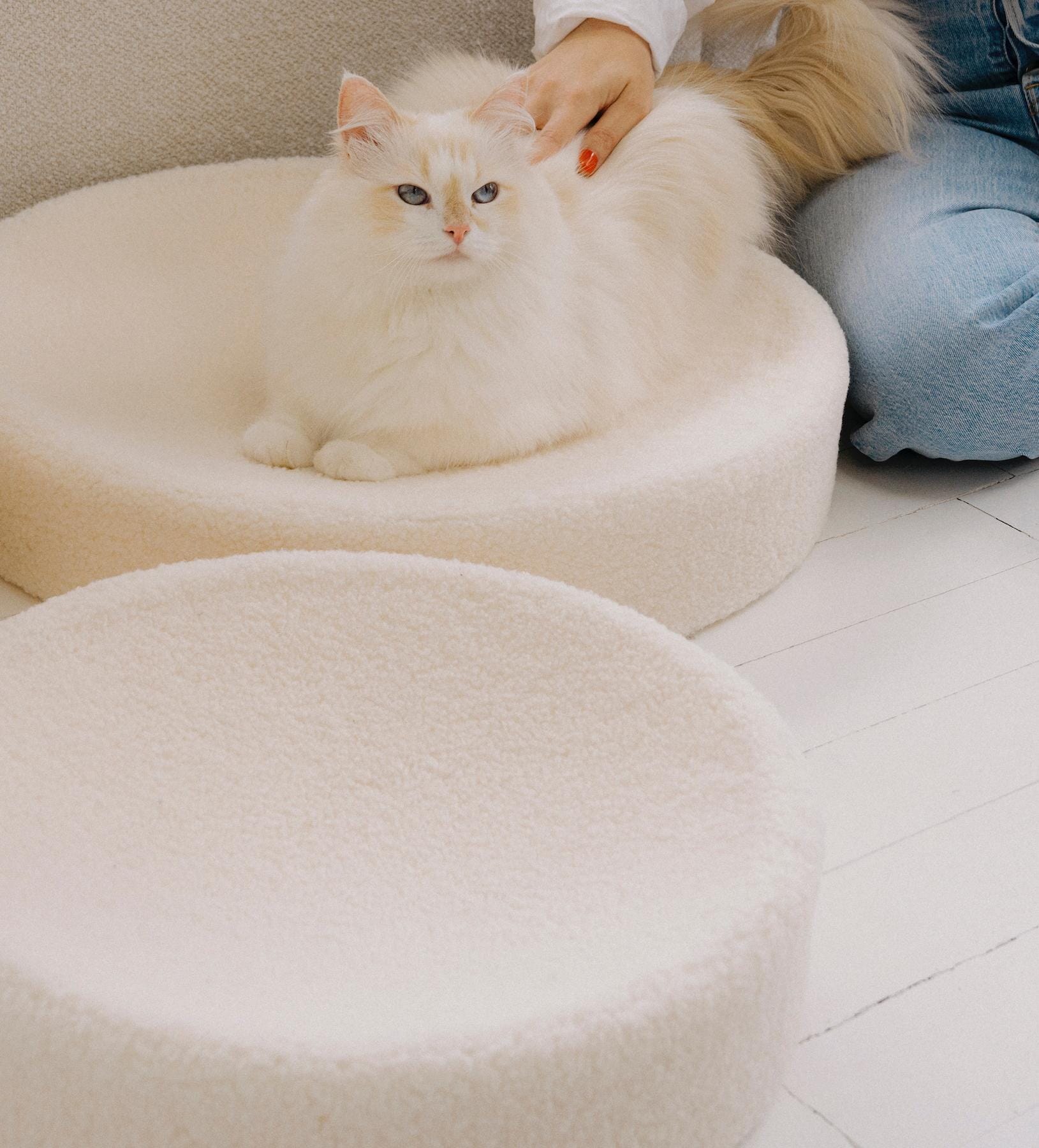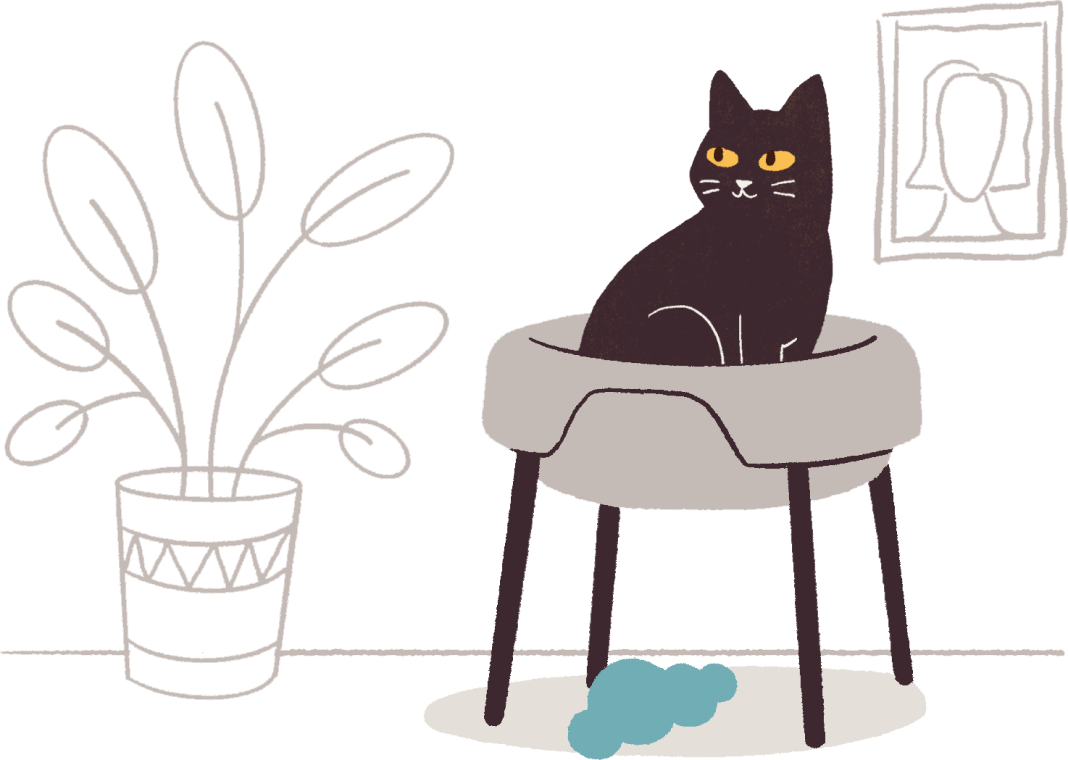Every cat owner has likely encountered the scenario where you buy your cat a new item only to have them engage with the piece for a day before they move on.
If this sounds familiar, here are tips and tricks to help. All you have to do is practice a little patience, give your cat some space, and slowly but surely, you’ll start to see them come around.
Today we're specifically going to look at cat trees and scratching posts, but if you’re having difficulty getting your cat to use a bed, this guide has all of our best tips about convincing cats to use their beds.
How To Get Your Cat To Use a Scratching Post
Scratching is a natural and oftentimes necessary behavior for cats. Scratching posts can save your furniture and carpets from the inevitable scratching that most cats will engage in. Remember, your cat is not scratching to upset you or cause you distress. The best line of defense against this behavior is providing your cat with a scratching post. Many cat owners struggle to convince their cat to actually use the post though.

This can be fixed with a few simple tricks that will have your cat ignoring your furniture and engaging with their post, so both of you are happy. Here are our best tips:
1. Consider Location
With scratching posts, we find that the majority of cat owners make the mistake of placing the scratching post in dark corners, behind furniture, or simply tucked out of sight. This is likely what is causing your cat to ignore their post.
The combination of the visual scratch marks and the scents that are released from the cat's glands when they scratch are signals of territory marking. And so, when you place the scratching post in a dark corner, it makes sense that this wouldn’t be the area where cats would naturally want to scratch. They want to “mark their territory” out in the open to show off.
With all of this in mind, some of the best location ideas for scratching posts include:
- Out in the open in high traffic areas. You don’t have to keep the scratching post here forever. You can slowly move the post away into a more inconspicuous area of your home, but starting in these high-traffic areas will help your cat become engaged with the post.
- Near areas where they are already scratching: If your cat is already scratching in a certain area of the home, it makes sense to place their scratching post near this area since they’ve already indicated this is a spot in the home where they enjoy engaging in scratching behaviors.
- Next to their bed/where they sleep: Cats love to scratch first thing in the morning. The scratching motion helps them start their day with a nice stretch of their toes, shoulders, and feet. Placing the post near the bed gives them a great opportunity to stretch/scratch when they wake.
- Near a window: If your cat can see wildlife outside the window, this will often lead to excitement, which often leads to a desire to scratch.
2. Try Catnip
If you have a cat who enjoys catnip, use this to your advantage by placing a bit of catnip on their post. In particular, placing the catnip at both the base and the top of the post will help her use the full post. In addition, your cat will likely now create positive associations with the post and be more inclined to use it in the future. Not to mention, just the simple act of climbing up the post to reach the top catnip will get them use to the feeling of the post on their paws. You can also use a catnip infused toy like our Cuppa Tea or Fishbone.
If your cat doesn’t like catnip but they have another favorite treat, you can follow the same principles with their preferred treat.
3. Engage In Play
If you have a cat who likes to play, try engaging them in play around their post to get them used to the new piece of furniture.
In particular, we recommend utilizing a wand-type toy, like our Fish & Chews, to help draw your cat over to the post. You can wiggle the wand around the post, encouraging your cat to reach up and grab the toy. Your goal here should be to get your cat to bring their paws up to the post when they tries to get the toy.
You can also place one of your cat's favorite toys at the top of the scratching post to try and encourage them to climb up it.
It’s all about providing your cat with positive associations around the post, while also convincing them to place their paws on the post without any force (using force will almost always backfire on you).
Credit: Instagram @britishshorthairbeignet
4. Put The Post On Its Side
While cats generally don’t have any issues with climbing up objects, if your cat has never seen a scratching post before, it might be worth placing the post on its side to encourage them to check it out.
If you do find that you have a cat who seems to prefer a horizontal scratching post, our Tab Horizontal Scratching Board was specifically designed to sit on any horizontal surface.
5. Use Multiple Posts
We understand that investing in multiple scratching posts might seem like a risk if you’re not even sure if your cat will use the object, but there’s no denying that the more scratching posts you place throughout your home, the more likely it is that your cat will leave your furniture alone and will use their post instead.
If you're not ready to invest in multiple scratching posts, use some of the tips from above, get your cat interested in one post, and slowly start to add as you become more confident that your cat will actually use them.
Keep in mind, if you have more than one cat, you should always have more than one scratching post.
How To Get Your Cat To Use a Cat Tree
Most of the principles discussed above will also apply when attempting to convince your cat to use a cat tree. At tuft + paw we offer cat trees that also double as scratching posts, like the Frond Cat Tree and Milo Cat Tree.
To review, some of the steps you’ll want to take when bringing a cat tree into the house include:
- Location: High-traffic areas where your cat can see outside are great for a cat tree
- Use treats: This helps create positive associations
- Engage in play: This also creates positive associations
When it comes to cat trees, ensuring you purchase the right tree for your specific cat can really help increase the likelihood that the tree is used.
Some things you’ll want to consider when purchasing a cat tree include:
- High-quality + sturdy: You might be tempted to save money on a cat tree, but if the tree isn’t sturdy, it’s very unlikely your cat will use it.
- The taller, the better: This isn’t an absolute must, but if you can get a tree that is tall it tends to be more appealing to cats. Remember, cats love to stretch out and a tall tree can help with this.
- Multiple platforms: The multiple platforms help keep the cats engaged and it gives them options for how they would like to use their tree.
- Soft surfaces: Cats will often use their cat tree as a nice spot to take a nap. Make this as easy as possible for them by finding a tree that has soft surfaces that are cozy and comfortable. Our Sprout Cat Tower has soft felt surfaces, as well as multiple platforms and nooks for the ideal cat tree experience.
We hope you’re feeling more confident about your cat using their scratching post and cat tree. While we know it can frustrating to purchase these items and have your cat reject them, we truly believe with some time and patience most cats can learn to love their cat furniture.
Cats aren’t born understanding what a cat tree or a scratching post is. These are human-made items that we create to help enrich a cat’s life. Sometimes, cats just need a little guidance to help them understand how to enjoy these pieces.
If you're looking for some more cat furniture inspiration, check out our guides to the 10 Best Cat Trees and the 10 Best Cat Scratching Posts (in our opinion, of course).









